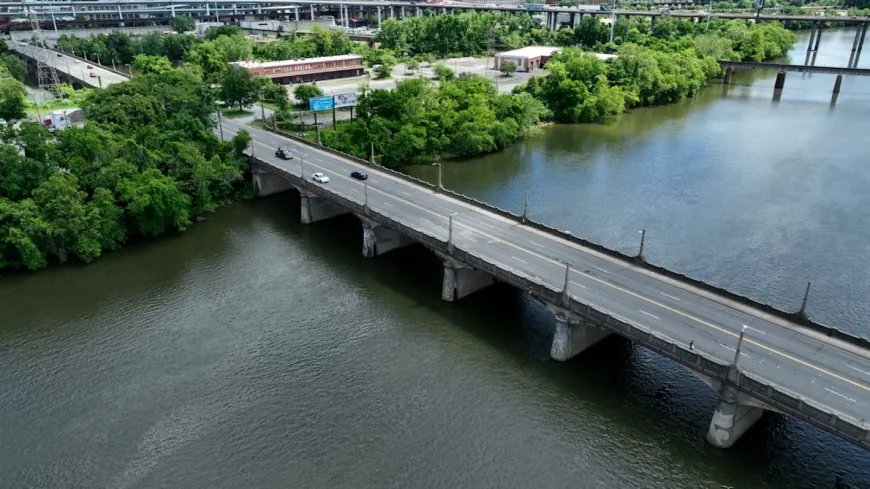Richmond residents walk Mayo Bridge to see how a new bridge will impact traffic

RICHMOND, Va. (WRIC) -- The future of the highly talked about Mayo Bridge has started to come into focus. For years, 8News has reported on how city and state officials seek public input on what improvements residents want for the highly traveled area.
On Sunday, Nov. 10, residents got a walking tour across the bridge to see how a new bridge would affect traffic, whether by car, foot or bike. Also, some gaps in the timeline of construction and cost have been filled.
“It really does not serve people biking and walking," said director of Bike Walk RVA Brantley Tyndall.
The Mayo Bridge connects Manchester and downtown Richmond over the James River and is 111 years old. Tyndall told 8News that updating the bridge is a once-in-a-lifetime opportunity.
“This walk has been a great opportunity to show just how dangerous it feels to walk across the Mayo Bridge with fast moving cars adjacent to the sidewalk," Tyndall said.
In the most recent update, Tyndall said construction will start in 2027 and will take about a year to complete. The new bridge will be built adjacent to the current bridge.
About $90 million has been allocated for the project, mainly through state, regional and federal funding. However, Tyndall said he thinks an additional $100 million is needed.
“The sidewalk is crumbling, and you don’t feel separated at all from cars going well over the speed limit," he said.
They originally wanted to keep the piers that are already there in place and just build a new road on it, but based on structural tests, the Virginia Department of Transportation (VDOT) has determined they need to be replaced.
“What people increasingly want is walkability, safe streets, and if we get this bridge replacement wrong, we’re gonna have a major setback for 100 years," Tyndall said.
VDOT released three mockup design options but the reaction wasn’t great. Residents are waiting for new designs that they anticipate will be more two-lane focused, rather than four-lanes like VDOT suggested.

 VENN
VENN 





